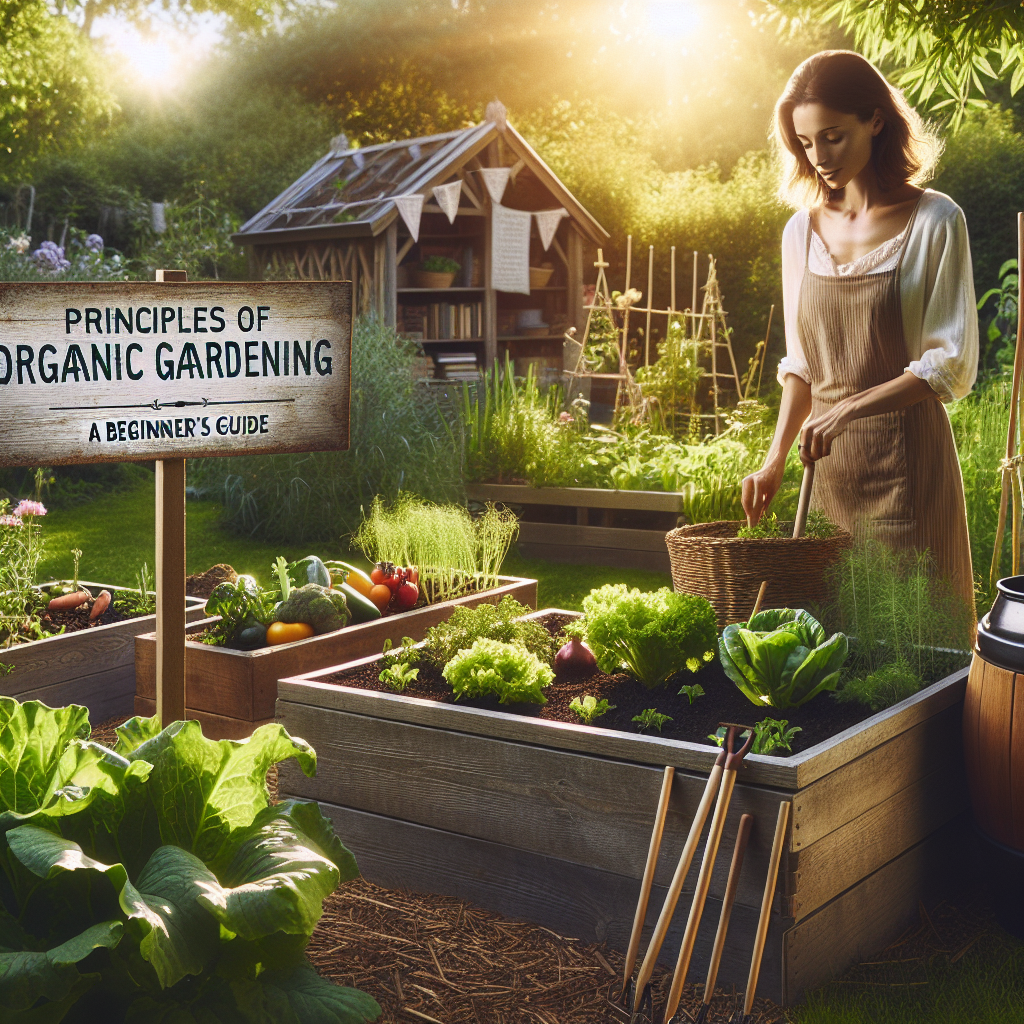Principles of Organic Gardening: A Beginner’s Guide
Organic gardening has permeated the modern consciousness as a sustainable and healthful alternative to conventional methods involving chemicals and genetically modified organisms. With an emphasis on balancing the ecosystem and relying on natural processes, organic gardening appeals to those seeking to cultivate plants in a way that enhances the environment rather than deplete it. Here’s a comprehensive beginner’s guide to understanding and starting your organic garden.
Understanding the Core Principles
Work With Nature Rather Than Against It
The heart of organic gardening lies in fostering and sustaining a natural balance in your backyard ecosystem. This includes encouraging beneficial insects, using organic compost to fertilize, and selecting plants that are naturally resistant to pests and diseases. By working with the natural systems, you can create a healthier, more resilient garden. The Rodale Institute, a pioneer in organic farming research, provides ample resources for understanding these principles (Rodale Institute).
Soil Is the Foundation
Healthy soil is the cornerstone of a successful organic garden. The objective is to create rich soil teeming with microorganisms, which will, in turn, nourish your plants. Composting is a key element in building this fertile ground, as it recycles organic materials back into the ecosystem, enriching the soil with essential nutrients. For beginners, the University of California’s Agriculture and Natural Resources has an excellent guide on composting (University of California ANR).
Getting Started
1. Location, Location, Location
When starting your organic garden, choosing a suitable location is a crucial first step. Your garden should have good drainage, adequate sunlight (generally at least six hours a day), and be protected from harsh winds. It’s also important to consider proximity to a water source.
2. Selecting Your Plants
Select plants that are adapted to your local climate and soil conditions. This will make them more resilient to pests and diseases. Additionally, consider crop rotation to prevent soil depletion and to interrupt cycles of pests or disease. Plants like marigolds can be interspersed to naturally repel pests, and herbs like basil can enhance the growth and flavor of nearby vegetables.
3. Starting with The Soil
Test your soil to understand its needs. Home testing kits are available, or you may contact your local cooperative extension office for resources. Once you know your soil’s pH and nutrient status, you can amend it as needed with organic materials.
For example, if your soil is too acidic, you might add some organic garden lime. A top-notch soil amendment to consider is the Espoma Organic Garden Lime, which corrects soil acidity and helps balance pH for improved soil structure (Espoma Organic Lime).
4. Composting
Set up a compost bin and start adding kitchen scraps (no meat or dairy), yard waste, and other compostable materials. Not only will this reduce waste going to the landfill, but it will provide you with a steady supply of rich organic material to add to your garden beds. Compost Guide offers comprehensive information on what you can and cannot compost.
Organic Gardening Best Practices
Water Wisely
Overwatering can promote fungal growth and weaken plant roots. Aim for deep, infrequent watering that encourages strong root development. Early morning is the best time to water, as this minimizes evaporation and allows foliage to dry before nightfall, reducing the risk of disease.
Mulching
Mulching helps conserve moisture, suppress weeds, and add organic matter back into the soil as it decomposes. Use organic mulch material like straw, wood chips, or leaves. The optimal mulch layer is about 2 to 4 inches thick.
Pest and Disease Management
Prevent issues by choosing disease-resistant varieties and healthy plants. If pests or diseases strike, identify them correctly and use organic control methods. For instance, neem oil can address a variety of garden pests and fungi without harming beneficial insects. The Environmental Working Group provides a wealth of information on safe pest control methods (EWG).
Organic Fertilizers
Sometimes, plants require an additional boost of nutrients. In these cases, opt for organic fertilizers, which release nutrients slowly and improve soil structure over time. The options range from seaweed extracts to bone meal to fish emulsion, all providing distinct benefits to plants.
For a balanced, slow-release organic fertilizer, you might consider Dr. Earth Organic Tomato, Vegetable & Herb Fertilizer. This product is formulated with probiotics and a variety of nutrients to promote vigorous plant growth (Dr. Earth Fertilizer).
Staying Committed
Organic gardening is not only about technique but also about philosophy. Integrating these principles with patience and care can transform your garden into a hub of biodiversity that supports your local ecology. Don’t be afraid to experiment and learn as you grow, adjusting practices to see what works best in your unique garden space.
Conclusion
Embarking on the journey of organic gardening requires an understanding of the interconnectedness of nature, a commitment to nurturing soil health, and the adoption of practices that bolster the natural environment. By cultivating the land thoughtfully and carefully, gardeners not only enjoy the fruits (and vegetables) of their labor but also participate in a larger movement towards ecological stewardship.
By weaving together these principles with hands-on practice, beginners will find organic gardening an immensely rewarding and enlightening experience—a venture that sprouts not just abundant gardens, but also a deeper respect and connection with the earth. Get your hands dirty, feed your soul and, most of all, have fun cultivating a greener world, one backyard at a time.


